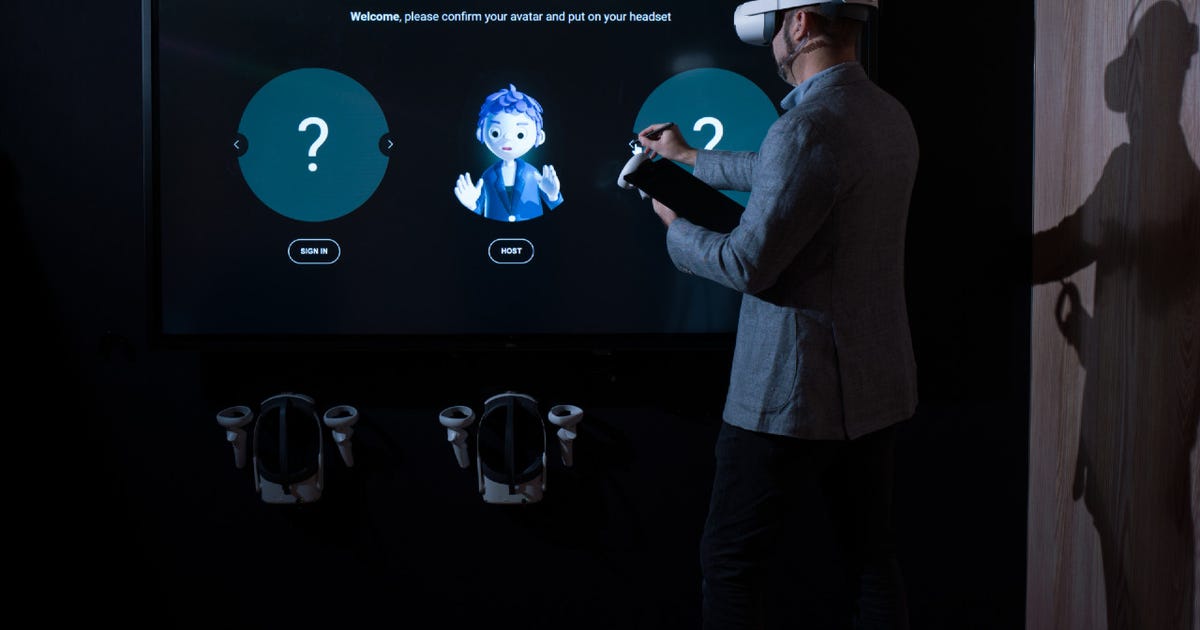The future of work after covid 19, the future of artificial intelligence, the future of work on display at cesarean, the future of ai, the future of work on display at cesar, the future of work on display at trinity, the future of work on display at ces 2023 floor, the future of work on display at ces 2023 schedule, the future of work podcast, best careers for the future, the future of work on display at ces show, the future of work ielts reading, the future of work on display at cessna, the future of work on display at ces 2023 tickets, how ai will impact the future of work and life.

CES 2023 feels the same and also quite different. Fancy, new, and outright weird tech fills the Las Vegas showroom halls I've called many times before. But in the three years true I was last here in person, the world has changed quite a bit. Especially the way we work.
It may take a tiny digging under the surface, but this year's CES show has a lot to say around the great shift toward hybrid and remote work, in everything from better video conference tools to moves at building a metaverse-infused, mixed-reality workspace.
Meetings in the metaverse
The metaverse workplace concept, at least according to one definition, is a public collaborative space where one can participate via several means: virtual or augmented reality, 3D displays, standard laptop, tablet and phone screens; or in-person over things like smart whiteboards that work across all these different experiences.
Dell has get a leader in showing off concept pieces and prototypes during CES, and this year, its Concept Nyx (the same name Dell uses for gaming prototypes) tackles that version of the metaverse head on. At a pre-CES preview, I was able to participate in a faux rallies by creating a 3D avatar for others to see, and also by sitting in lead of an autostereoscopic display (allowing you to see in 3D deprived of special glasses) that gave me a 3D view of a project. After that, I donned a VR headset to feel like I (or my avatar) was actually in that public space and writing on a whiteboard with my VR controller. And after that, I was able to use a slate-style tablet to interact with the real-world version of that same whiteboard, but without wearing a headset.
None of this is end to being a shipping product anytime soon, and like many things at and about CES, the hardware is carefully labeled as "conceptual." Of that batch of products and has, the oversize, glasses-free 3D display, using eye-tracking hardware to make the 3D image actually look gross, seemed like the part with the most workplace potential.
Gamers go first
Much new PC technology is driven good by the gaming audience, which has a tolerance for gear that can be both expensive and experimental. That's why ideas like VR and autostereoscopic 3D often show up in gaming hardware good, before moving into more practical products for your nongaming hours.
For example, this CES saw several new 18-inch gaming laptops, a hide size that's been virtually extinct since the early 2010s. The first of these bigger screens are in gaming laptops from Dell, Razer, Asus and Acer, but there's obvious crossover appeal for hybrid and remote workers who want the flexibility of a laptop but with a larger hide that feels more desktop-like. Razer laptops, with their minimalist styling, are especially popular with gamers and creative pros similarly. I would not be surprised to see more professionally pitched laptops eventually grow into that new 18-inch size.
The 18-inch Alienware M18.
Josh GoldmanAsus also leaned into glasses-free 3D with its new ProArt Studiobook and Vivobook Pro laptops. Both, similar to Dell's display prototype, use eye tracking to make 3D viable. And those devices are aimed at artists and designers, not gamers. Acer also has a similar eye-tracking 3D laptop aimed at at gamers, called the Predator Helios 300, as well as a professional point to from 2022 called the Acer SpatialLabs View with that same technology.
Laptops with glasses-free 3D were agreeable tried back in 2012 and never made it to a instant generation. The eye tracking in these new versions, nonetheless, makes the experience miles better.
More, and different, screens
Other experiments, like Lenovo's twin-OLED-screen Yoga Book 9i and shimmering E Ink/OLED combo, the ThinkBook Plus Twist, might eventually moneys some new features that will bleed into more staid work laptops, but it's far from a sure thing. That said, new E Ink devices like the 10.3-inch Yoga Paper could have more practical work applications, and I only say that because I've been amdroll a similar-feeling new Amazon Kindle Scribe while walking the inoperative at CES 2023 to great effect.
The Yoga Book 9i from Lenovo.
Josh GoldmanThe most welcome trend in both consumer and company laptops from the past two years continues unabated, I'm be indulge in to say. Nearly every new laptop we saw defaulted to a full-HD 1,080-resolution webcam, rather than the wimpy low-res versions that were approved prepandemic.
Even better, it's considered such a standard feature that PC makers hardly feel the need to call it out anymore. It was way too long in coming, and low-res webcams made that agreeable year of remote work in 2020 more difficult than it obligatory to be for many. But now that we've normalized the hybrid organization and accept video meetings as equal to in-person ones, I'd call it one of those subtle but essential changes to how we work that's making life just a puny bit easier.
The best laptops in every category
Source
